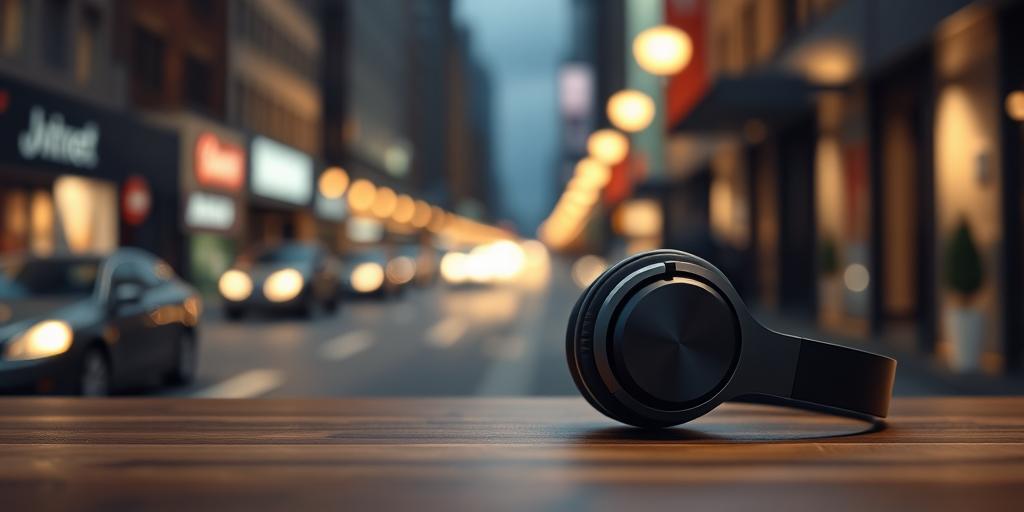How Do Noise-Canceling Headphones Actually Work?
Have you ever wondered how those amazing noise-canceling headphones manage to silence the chaotic world around you? It’s not magic, although it might feel like it! The technology behind these wondrous devices is surprisingly clever and involves some fascinating physics. Prepare to have your mind blown as we delve into the science of sound and discover exactly how noise-canceling headphones work their magic, transforming your noisy commute into a peaceful sanctuary or your busy office into a quiet haven. Let’s dive in and unravel this auditory mystery!
Understanding the Enemy: Sound Waves
Before we explore the intricacies of noise cancellation, we need to understand the nature of sound itself. Sound is essentially a vibration that travels in waves through a medium, typically air. These waves are characterized by their frequency, measured in Hertz (Hz), which determines the pitch of the sound. Higher frequencies mean higher pitches, while lower frequencies mean lower pitches. The amplitude of the sound wave dictates its loudness or intensity, measured in decibels (dB). The greater the amplitude, the louder the sound. Noise-canceling headphones address the problem of unwanted sound by interfering with these waves, effectively reducing their amplitude and thus their loudness.
The Physics of Sound Waves
Sound waves propagate by compressing and rarefying the air molecules. When a sound source vibrates, it creates areas of higher pressure (compression) and lower pressure (rarefaction) in the surrounding air. These pressure variations travel outward from the source as waves, reaching our ears where they are converted into electrical signals that our brain interprets as sound. This understanding is critical to grasping the mechanism behind noise cancellation, because it’s all about manipulating these air pressure fluctuations.
The Art of Anti-Noise: Active Noise Cancellation Explained
Active noise cancellation (ANC) is the star of the show in noise-canceling headphones. It’s based on a principle known as destructive interference. Imagine two identical waves, perfectly out of phase with each other. When these waves meet, their crests and troughs cancel each other out, resulting in silence. This is precisely what ANC technology does. A microphone inside the headphones detects incoming ambient noise. The headphones then generate an anti-noise wave – an inverted copy of the ambient noise wave – that is precisely out of phase with the incoming noise.
How the Anti-Noise Wave is Created
The process of creating this anti-noise wave is remarkably sophisticated. Tiny, powerful microprocessors analyze the incoming sound waves in real-time, determining their frequency and amplitude. This information is then used to generate an anti-noise wave of the same frequency but with an inverted phase. This anti-noise signal is then played through the headphone speakers, canceling out the ambient noise and dramatically reducing unwanted sounds.
Beyond the Basics: Advanced Noise Cancellation Technologies
While active noise cancellation forms the core technology, manufacturers continuously innovate and refine it. Many high-end headphones use hybrid noise cancellation systems that combine ANC with passive noise isolation. Passive noise isolation relies on the physical design of the headphones, using materials and shapes to physically block out sound. The combination of active and passive methods generally leads to superior noise reduction across a broader range of frequencies.
Hybrid Noise Cancellation: The Ultimate Solution?
Hybrid noise cancellation offers a synergistic effect. Passive methods tackle lower-frequency sounds, such as engine rumble, while ANC excels at dealing with higher-frequency noises, such as human voices or high-pitched sounds. This makes these systems highly effective in various environments, providing a much cleaner and quieter listening experience.
Choosing the Right Noise-Canceling Headphones for You
With the market overflowing with noise-canceling headphones, choosing the right pair can feel overwhelming. Consider factors like the level of noise cancellation, comfort, sound quality, and battery life. Some headphones offer advanced features like transparency mode, which allows you to hear your surroundings without removing the headphones, while others prioritize features for different needs.
Factors to Consider When Choosing Headphones
Make sure you do your research and read reviews before making a purchase to find the perfect pair for your lifestyle. Whether you’re looking for headphones for your commute, travel, or use in a busy office, there’s a pair of noise-canceling headphones out there designed to enhance your listening experience.
Ready to experience the blissful silence? Explore the world of noise-canceling headphones today and discover the transformative power of quiet! Explore our range of top-rated noise-canceling headphones now and find the perfect pair for you!













